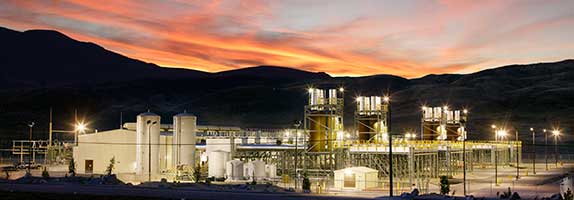

About Marine
Technology group Wärtsilä announces significant advancements in fire safety and acoustic noise reduction for its energy storage systems (ESS), which will enable its customers to stay ahead of regulatory changes while minimising the environmental impact of their projects. These developments, including rigorous large-scale testing and enhanced noise mitigation technologies, further position Wärtsilä as a leader in safe and community-conscious energy solutions.
Wärtsilä has recently completed its third and fourth rounds of large-scale fire testing following the 2023 testing done for the Quantum energy storage system, surpassing the mandated UL 9540A testing standards for its newer generation Quantum High Energy and Quantum2 energy storage systems. Conducted in partnership with CSA Group at their lab, these tests involved purposeful ignition of the enclosure until the fire was self-sustaining. Both the Quantum High Energy and Quantum2 enclosures fully consumed all available fuel. Data from the test show no risk of propagation from the initiating unit to adjacent units with all modules remaining below cell venting temperatures.
This approach is designed to simulate a worst-case scenario and exceeds current industry standards. Wärtsilä is one of the only battery energy storage companies globally to perform such extensive fire safety evaluations. Wärtsilä also hosted key stakeholders to witness the tests, including regulated utility representatives, fire protection consultants, and insurance and owners’ engineers.
“Large-scale energy storage system installations must address the safety concerns of the broader community,” says Josh Dinaburg, Fire Test Specialist at CSA Group and Vice Chair of the NFPA Research Foundation Alarm Council. “Recent testing of Wärtsilä’s Quantum High Energy and Quantum2 ESS showed that a fully involved, large-scale fire did not propagate into adjacent battery units. A design that limits propagation allows local fire service to isolate and control the fire, reducing the overall threat to life, property, and the environment.”
“These new fire safety measures demonstrate our commitment to going above and beyond existing industry standards, meeting the intent of the new large-scale fire testing requirements referenced in NFPA 855 2026,” says Chris Groves, Product Manager leading Safety Engineering at Wärtsilä. “We do not see fire as an inevitability; therefore, our intent is not just to meet regulatory requirements, but to anticipate future safety needs. These tests ensure we are proactively providing customers with the highest level of protection.”
The fire testing also conforms to the forthcoming CSA TS-800 standard, which will set new benchmarks for the safety of energy storage systems.
“I applaud Wärtsilä for their proactive role in conducting these tests, which has resulted in no propagation to adjacent units,” says Paul Hayes, Vice President of Energy Structure at Hiller Companies. “This reassures us of their commitment to safety and instils confidence in their capabilities.”
In addition to fire safety, noise mitigation has become a top priority as energy storage systems are built in closer proximity to residential areas, where there are strict penalties for exceeding noise limits. Wärtsilä’s energy storage systems now feature advanced attenuation solutions and operational control that can be tailored to specific project needs. This proactive approach to noise reduction also includes third-party verification of noise levels conducted by regional consultants to ensure accuracy and compliance with local regulations.
“Close collaboration with clients allows us to develop tailored noise reduction solutions, such as low fan speed controls and third party-verified noise attenuation solutions,” says Fadi Zara, Program Manager at Wärtsilä Energy Storage and Optimisation.
These advancements demonstrate Wärtsilä’s continued focus on exceeding industry standards for the environmental impact of its energy storage systems and ensuring customers across the globe receive full regulatory support from project inception through completion.
Learn more:
Wärtsilä Energy Storage & Optimisation Technology
Media contact for more information on this release:
Katri Pehkonen
Communications Manager
Wärtsilä Energy
Mob: +358 50 591 6180
katri.pehkonen@wartsila.com
Image caption: Wärtsilä announces significant advancements in fire safety and acoustic noise reduction for its energy storage systems. © Wärtsilä
All Wärtsilä releases are available at www.wartsila.com/media/news-releases and at news.cision.com/wartsila-corporation where also the images can be downloaded. Use of the image(s) is allowed only in connection with the contents of this press release. Wärtsilä images are available at www.wartsila.com/media/image-bank.
Wärtsilä Energy in brief
Wärtsilä Energy is at the forefront of the transition towards a 100% renewable energy future. We help our customers and the power sector to accelerate their decarbonisation journeys through our market-leading technologies and power system expertise. Our solutions include flexible engine power plants, energy storage and optimisation technology, and services for the whole lifecycle of our installations. Our engines are future-proof and can run on sustainable fuels. Our track record comprises 79 GW of power plant capacity, of which 18 GW are under service agreements, and over 125 energy storage systems, in 180 countries around the world.
www.wartsila.com/energy
Wärtsilä in brief
Wärtsilä is a global leader in innovative technologies and lifecycle solutions for the marine and energy markets. We emphasise innovation in sustainable technology and services to help our customers continuously improve environmental and economic performance. Our dedicated and passionate team of 17,800 professionals in more than 280 locations in 79 countries shape the decarbonisation transformation of our industries across the globe. In 2023, Wärtsilä’s net sales totalled EUR 6.0 billion. Wärtsilä is listed on Nasdaq Helsinki.
www.wartsila.com
“We stand at a tipping point”: Wärtsilä calls for urgent action to enable more flexible power systems